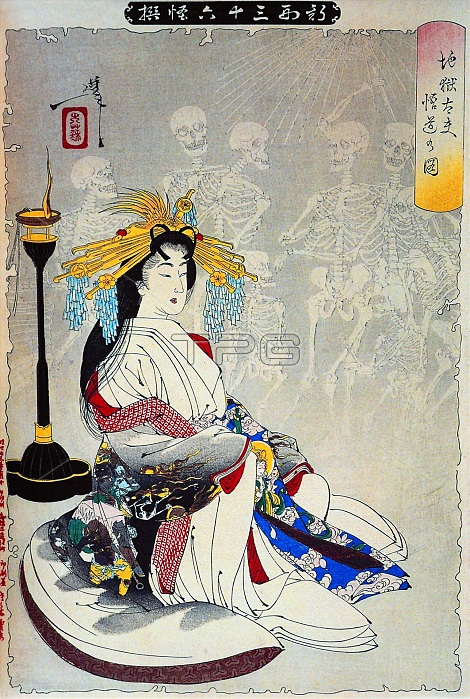
Oiran (豁) were the courtesans of Edo period Japan. The oiran were considered a type of y?jo (笴) 'woman of pleasure' or prostitute. However, they were distinguished from the y?jo in that they were entertainers, and many became celebrities of their times outside the pleasure districts. Their art and fashions often set trends among the wealthy and, because of this, cultural aspects of oiran traditions continue to be preserved to this day. The oiran arose in the Edo period (16001868). At this time, laws were passed restricting brothels to walled districts set some distance from the city center. In the major cities these were the Shimabara in Kyoto, the Shinmachi in Osaka, and the Yoshiwara in Edo (present-day Tokyo). These rapidly grew into large, self-contained 'pleasure quarters' offering all manner of entertainments. Within, a courtesanˇs birth rank held no distinction, which was fortunate considering many of the courtesans originated as the daughters of impoverished families who were sold into this lifestyle as indentured servants. Instead, they were categorized based on their beauty, character, education, and artistic ability. Among the oiran, the tay? (びひ) was considered the highest rank of courtesan and were considered suitable for the daimyo or feudal lords. In the mid-1700s courtesan rankings began to disappear and courtesans of all classes were collectively known simply as 'oiran'. The word oiran comes from the Japanese phrase oira no tokoro no n?san (????┮???) which translates as 'my elder sister'. When written in Japanese, it consists of two kanji, meaning 'flower', and 豁 meaning 'leader' or 'first', hence 'Leading Flower' or 'First Flower'.
| px | px | dpi | = | cm | x | cm | = | MB |
Details
Creative#:
TOP27283445
Source:
達志影像
Authorization Type:
RM
Release Information:
須由TPG 完整授權
Model Release:
No
Property Release:
No
Right to Privacy:
No
Same folder images:

 Loading
Loading